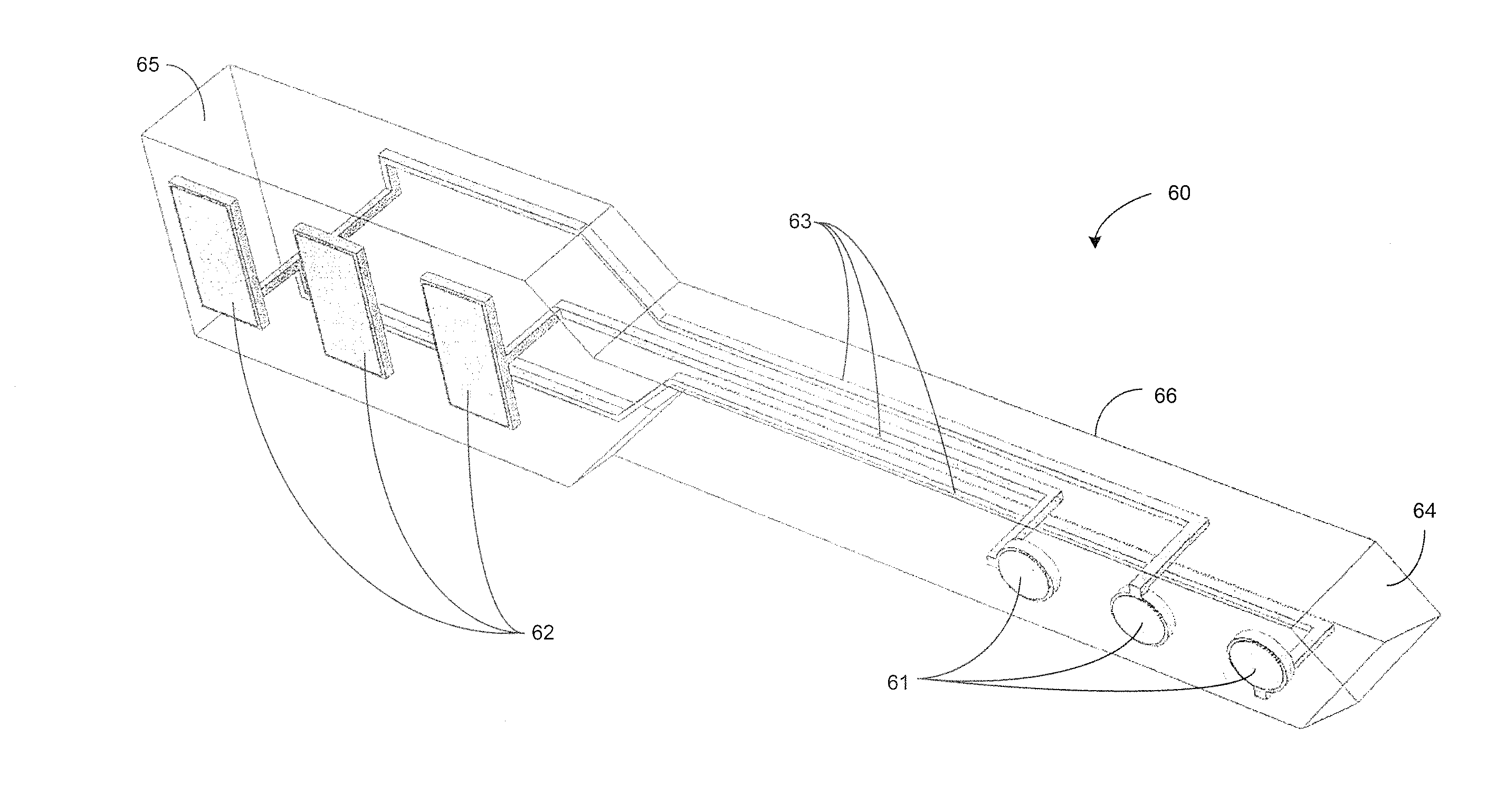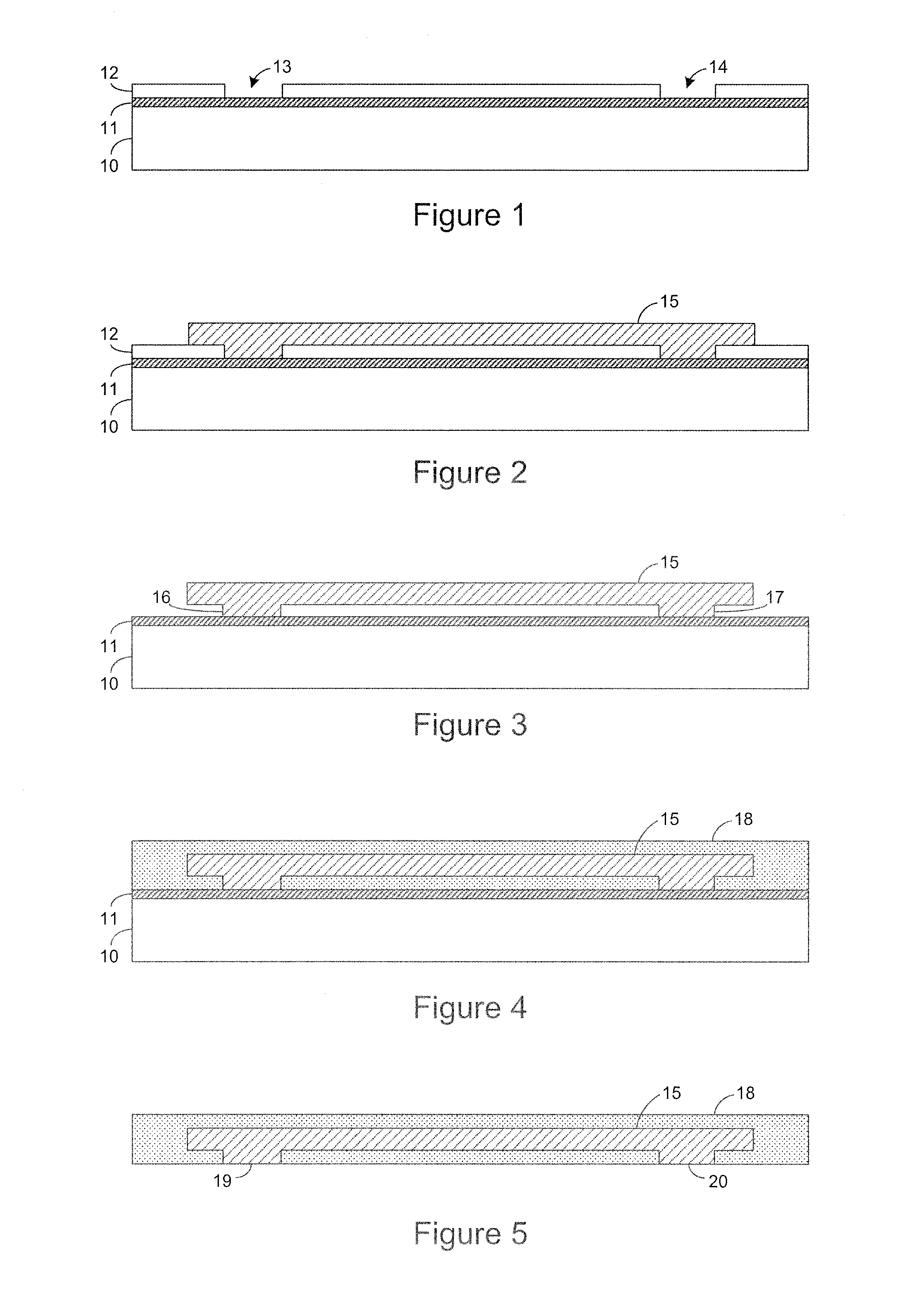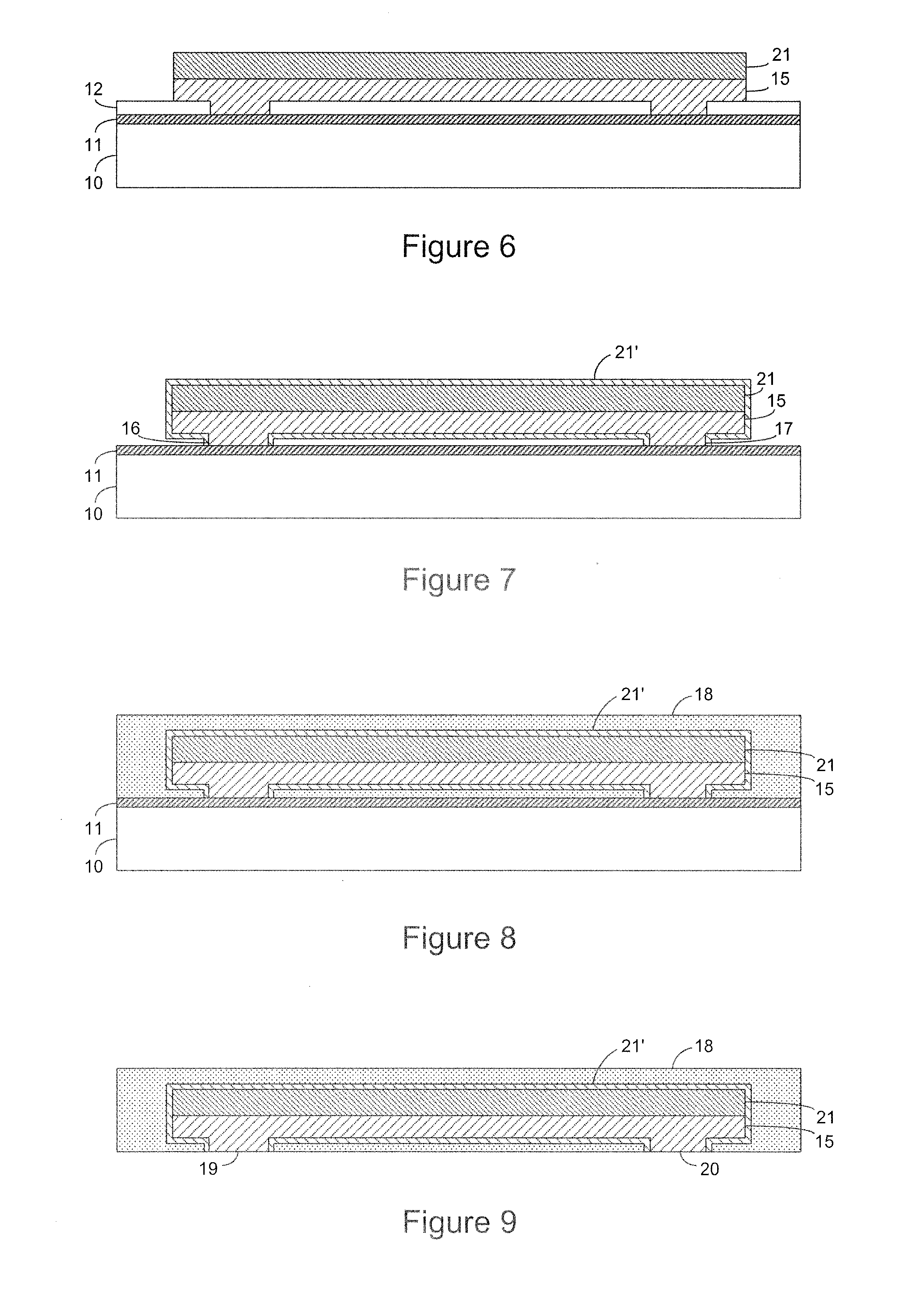Conformally Encapsulated Multi-Electrode Arrays With Seamless Insulation
a technology of seamless insulation and encapsulation, applied in the field of multi-electrode arrays, can solve problems such as device failure, electrical shorts, trace metal corrosion, etc., and achieve the effects of reducing failure opportunities, enhancing adhesion, and improving adhesion
- Summary
- Abstract
- Description
- Claims
- Application Information
AI Technical Summary
Benefits of technology
Problems solved by technology
Method used
Image
Examples
Embodiment Construction
[0025]Turning now to the drawings, FIGS. 1-5 show a first example embodiment of the method of fabricating a conformally encapsulated electrode array of the present invention, and the electrode array formed thereby.
[0026]In particular, FIG. 1 shows a substrate having three layers, including a lower layer 10 which may be characterized as a handle wafer; a middle or embedded layer 11 which may be characterized as a release layer; and an upper layer 12 which may be characterized as a sacrificial layer. Via openings 13, 14 are also shown formed through the sacrificial layer 12 down to the release layer 11, such as for example by an etching process. It is appreciated that each of the release and sacrificial layers 11 and 12 may be formed using various deposition methods and techniques known in the micro-fabrication arts. In the alternative, preformed three layer substrates, such as silicon-on-insulator (SOI) wafers, may also be used. It is further appreciated that the sacrificial layer ma...
PUM
 Login to View More
Login to View More Abstract
Description
Claims
Application Information
 Login to View More
Login to View More - R&D
- Intellectual Property
- Life Sciences
- Materials
- Tech Scout
- Unparalleled Data Quality
- Higher Quality Content
- 60% Fewer Hallucinations
Browse by: Latest US Patents, China's latest patents, Technical Efficacy Thesaurus, Application Domain, Technology Topic, Popular Technical Reports.
© 2025 PatSnap. All rights reserved.Legal|Privacy policy|Modern Slavery Act Transparency Statement|Sitemap|About US| Contact US: help@patsnap.com



